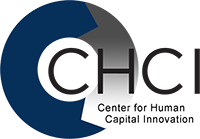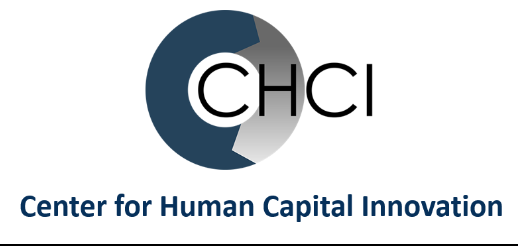
Avoid Leading a Meeting That “Could’ve Been an Email”
You’ve probably been in that meeting — the one where the agenda looks promising, but the conversation drifts, time runs out, and nothing truly gets decided. You leave wondering, “What did we actually accomplish?”.
We run meetings because that’s what we’ve always done. But somewhere along the way, we’ve confused “holding a meeting” with “making progress.” The truth? A meeting isn’t progress by default—it’s simply a container.
And that’s where facilitation comes in.
The real skill isn’t running a meeting. It’s facilitating one, which looks like creating a space where ideas take shape, decisions happen, and people leave energized rather than drained. And effective facilitation doesn’t start when everyone meets; it begins long before that.
One approach is to use the ADDIE model. Originally developed for instructional design, ADDIE—Analyze, Design, Develop, Implement, Evaluate—offers a structure for building meaningful, outcome-driven meetings. It’s not only for trainers or educators. It’s a mindset for anyone who wants their meetings to be valuable.
A – Analyze: Understand Your Audience
Facilitation begins with curiosity. Long before you walk into the room or click the Start Meeting button, ask yourself: Who will be there? Why are they attending? What do they need to accomplish? What challenges or tensions might exist between participants?
The Analyze phase is all about understanding your audience so you can design a session that meets their needs, not just yours.
One healthcare operations team learned this the hard way. They held weekly “alignment” meetings that consistently ran long but achieved little. When they finally stopped to analyze, they discovered that half the group didn’t even know the meeting’s purpose. Some thought it was for updates; others thought it was for problem-solving. Once they clarified the goal and invited only the necessary participants, the number of attendees dropped slightly, yet engagement doubled. The result? Shorter, sharper discussions and actual outcomes.
In summary, a little bit of thoughtful audience analysis can save a lot of wasted time.
D – Design: Craft the Experience
Once you understand your audience, it’s time to design the experience. The Design phase is about mapping out the flow. Consider what conversations, questions, or activities will move the group toward its goal.
A well-designed meeting has a rhythm: a clear opening that sets the tone, a logical flow that keeps people oriented, and intentional moments for engagement and reflection. Design is where structure meets creativity.
Too often, though, leaders skip this part. They jump straight from “We need a meeting” to “Let’s make slides.” The result? A session that’s more broadcast than collaboration.
One national health system decided to approach its quarterly leadership meeting differently. Instead of three hours of PowerPoint presentations, they included small-group conversations, polls, and short reflections. The content was the same, but the energy, ownership, and clarity were completely transformed.
Designing with intention turns a routine meeting into a shared experience.
D – Develop: Build the Tools
Design gives you the plan. Development brings it to life.
This step is about creating the materials, prompts, and logistics that support your design—crafting discussion questions, creating materials, testing the tech, and organizing the space. A skilled facilitator doesn’t only prepare what they’ll say; they prepare how others will engage.
One regional care management team learned this firsthand. In previous sessions, discussions wandered and time slipped away. So, before their next meeting, the facilitator built a simple toolkit: clear visual slides, discussion prompts for participant, and a whiteboard for capturing insights. The change was immediate. Conversations stayed focused, ideas flowed faster, and the group finished on time for the first time in months.
It wasn’t the technology that made the difference — it was the thoughtful preparation behind it. Development is the quiet backbone of every great meeting. Think of it as building the runway before takeoff. The smoother the setup, the easier it is to adapt in the moment.
I – Implement: Deliver and Adapt
This is the step everyone sees, and it’s also the one most people focus on. Implementation is about delivery: your voice, your presence, your pacing, and your ability to read the room.
But here’s the secret: great delivery isn’t about perfection. It’s about connection. The best facilitators project confidence and flexibility because they’re prepared, not because they’re flawless.
One facilitator shared a story of leading a session when the technology crashed halfway through. Instead of panicking, she switched to a simple “raise your hand” exercise and small-group discussions. The transition was seamless. The group stayed engaged, and the objective was still met.
That’s the beauty of being ready. Notice how the Implement phase comes near the end of the ADDIE process. It’s powered entirely by the steps that came before it. Without strong analysis, design, and development, even the most charismatic delivery can fall flat.
E – Evaluate: Reflect and Refine
Finally, every great facilitator closes the loop.
The Evaluate phase is where you step back and ask: What worked? What didn’t? What could we do differently next time? Feedback isn’t simply nice to have; it’s how facilitators grow.
Evaluation can be as simple as asking participants for one takeaway and one suggestion, or as structured as using the Kirkpatrick Model. What matters is reflection and iteration.
When one organization began systematically evaluating its meetings, they saw results within months: higher engagement scores, faster decision-making, and better collaboration across departments. Each session became a little sharper, a little more effective, a little more human.
That’s the quiet power of evaluation — it turns a good meeting into a great one.
The Real Lesson
If you look closely, you’ll see that only one of the five ADDIE steps — Implement — happens in the room. Everything else takes place before or after.
Yet most meeting leaders spend 90% of their effort on the 10% that’s visible. They overprepare their slides and underprepare their strategy.
The next time you’re about to send that meeting invite, pause and think like a facilitator:
- Have I analyzed who needs to be there?
- Was I intentional when I designed the experience?
- Did I develop the right tools to support engagement?
- And am I prepared to evaluate what happens next?
Meetings aren’t the problem. It’s the way we prepare for them. Once you start applying ADDIE, you’ll never look at “just another meeting” the same way again.
How do you prepare for your most important meetings? What’s one small shift that’s helped your team’s sessions feel more productive, engaging, or human?
Leave a comment below, send us an email, or follow us on LinkedIn.


Leave A Comment